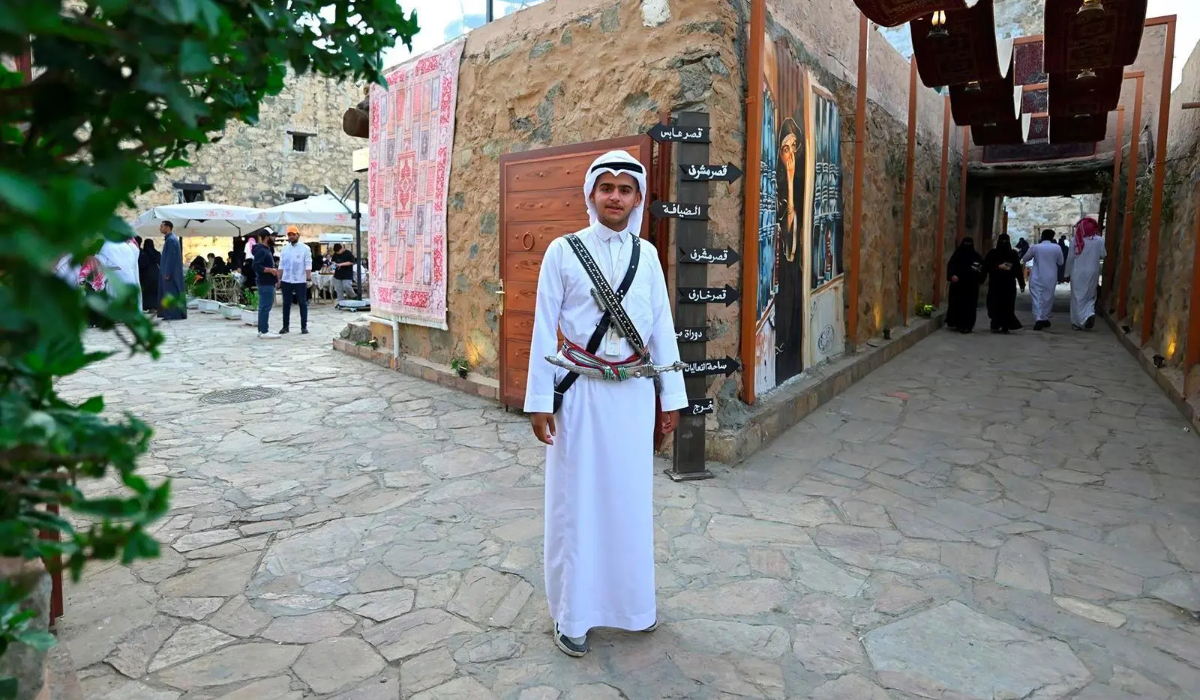RIYADH: The famous heritage palaces in the Asir region have become tourist destinations, offering a rich blend of history and culture.
The Saudi Press Agency reported that these sites also boost economic activity by creating job opportunities during the summer season.

The heritage palaces in Asir boost economic activity by creating job opportunities during the summer season. (SPA)
The Al-Asabila Palaces, which are situated in Al-Namas Governorate some 150 km south of Abha, have become a major attraction. Situated in the heart of Al-Namas, these palaces now draw hundreds of visitors daily, both tourists and locals, according to the SPA. Their popularity has surged following their inauguration by Prince Turki bin Talal bin Abdulaziz, chairman of the Asir Development Authority.
Visitors begin their tour of the palaces by shopping in areas dedicated to traditional fashions, antiques, and gifts that showcase the heritage and arts of the Asir region.

The heritage palaces in Asir boost economic activity by creating job opportunities during the summer season. (SPA)
They can then relax with coffee and hot drinks before exploring the Abs Palace, which has been restored to welcome guests.
Tourist guide Saleh Al-Shehri told the SPA: “At the beginning of the Saudi era the palaces served as the headquarters for various government agencies, including the court, and as venues for national events.”
FASTFACTS
• Al-Asabila Palaces are situated in Al-Namas governorate some 150 km south of Abha.
• These palaces now draw hundreds of visitors daily, both tourists and locals, Saudi Press Agency reports.
• The initiative to restore the palaces was taken by their owners and helped transform them into a tourist and cultural attraction, says tour guide.
He added that the initiative to restore the palaces was taken by their owners and helped transform them into a tourist and cultural attraction. This effort aligned with the Kingdom’s Vision 2030, which aims to revitalize the area and boost domestic tourism.

The heritage palaces in Asir boost economic activity by creating job opportunities during the summer season. (SPA)
Historian Amr bin Gharamah Al-Amrawi says that Al-Namas was established in 1363-1364. However, it only received the name Al-Namas about 150 years ago, being previously known as Al-Waad village.
It was later named after the trees in the surrounding areas and the adjacent valley, while the presence of a well called Al-Namasa also contributed to the village being renamed Al-Namas.

The heritage palaces in Asir boost economic activity by creating job opportunities during the summer season. (SPA)
The heritage site features several palaces, including Abs, Mishref, Turban, and Kharif. These structures, which range from two to three floors in height, are examples of the traditional construction style of the Asir region.
The palaces contain 60 rooms and span a total area of about 5,000 sq. meters. The exteriors are of white limestone, extracted from white quartz stone, while the roofs feature wood, leaves, and juniper. The interiors are finished with plaster mixed with clay.

The heritage palaces in Asir boost economic activity by creating job opportunities during the summer season. (SPA)
According to the SPA, the area is home to numerous archaeological sites from various periods, the most famous location being Al-Jahwah village, mentioned by the traveler Al-Hamdani, which is located east of the present-day Al-Namas Governorate.
Al-Amrawi added that the governorate contains Islamic inscriptions in mountains known as Al-Sijin, Al-Gharamah, Dhul-Ain, Ajama, and Qarn Al-Ghala.
































